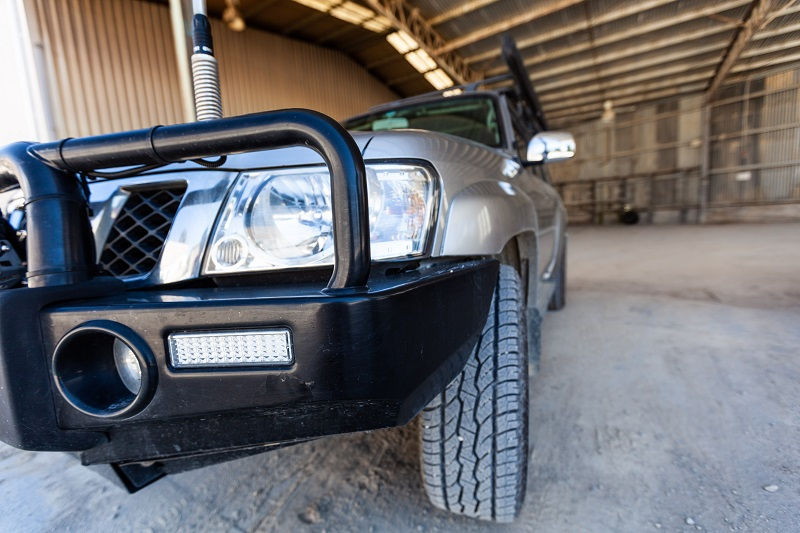Comparing Material Choices for Bullbars: Steel vs Aluminium
- annawrench1315
- Jan 11
- 3 min read
Updated: Nov 4
When thinking of rigging your 4X4, what comes to mind first? Is it the brand, the specifications, or the type of bullbar to use? Perhaps, you find yourself overwhelmed with the various material choices in the market. You are not alone. Today, we are focusing the spotlight on two of the most popular bullbar materials: steel and aluminium. In this comprehensive guide, we'll engage in an intriguing tussle, dissecting the benefits, disadvantages, and suitability of these potent rivals.
The bullbar serves as a protective shield, saving your vehicle from potential damages while adding an aesthetic appeal. Now, would it be more beneficial to envelop your car with a steel bullbar or an aluminium one? Each material possesses distinctive qualities making one more favorable over the other under certain conditions. To help you make the best decision, we delve threefold into this topic first clearing the air around the origin and construction of these materials. Secondly, we enumerate their practicality and performance in real-world situations, and finally, we pit these materials against each other in a face-off of durability versus weight.
An informed choice makes all the difference. Consider this blog as your compass to make sense of the technical specifications, enduring qualities and price tags related to your bullbar. Let's dig in!
The Manufacturing Process - Steel vs Aluminium
The journey of both steel and aluminium from their raw forms to the final product is a fascinating one. Steel is an alloy, combining iron and carbon, providing it unparalleled strength. Aluminium, a by-product of bauxite, undergoes refining and smelting processes to acquire its signature toughness and sturdiness.
In the race of rigidity, steel takes the lead. However, aluminium brags a higher strength-to-weight ratio, maintaining durability while taking a lighter toll on your vehicle's suspensions. These characteristics poise a fundamental difference in your vehicle's performance and handling.

Performance under Pressure - Pros and Cons
Steel wins hands down when it comes to withstanding wild adventures and rough terrains due to its incredible resilience. Unfortunately, the caveat here is its weight. The denseness of steel bullbars impacts fuel efficiency, putting additional strain on your vehicle's front suspension.
On the flip side, aluminium bullbars, lighter in weight, eliminate such issues, making them an ideal choice for urban and highway driving. They offer decent protection minus the burden on your vehicle’s frontend. However, they do tend to dent more easily when compared to their steel counterparts.
Compromise between Durability and Weight
Striking the right balance between the sturdiness of steel and the lightness of aluminium can be a head-scratcher. Steel bullbars boast of built-to-last durability that gives solid defence against impacts. However, aluminium, while lighter and more fuel-efficient, falls short when it comes to enduring heavy collisions.

Practicality and Maintenance
While steel might be a heavyweight champion in terms of durability, it is more prone to corrosions and requires more maintenance. Aluminium, with its corrosion-resistant property, cuts down maintenance costs significantly.
Price Tags
When it comes to prices, aluminium bullbars generally come with a heftier price tag compared to steel bullbars. Nevertheless, the long-term and maintenance costs of aluminium can pay off, especially for drivers frequenting coastal or high-humidity areas.
Conclusion
In the riveting rivalry between steel and aluminium for the battle of the best bullbar, there is no ‘one size fits all’ winner. The final verdict hinges on understanding the unique advantages of each material and aligning them with your specific needs, lifestyle, budget, and most importantly, the kind of terrains you drive in often.
If your quests are more off-road or rural, steel's incredible strength and durability make it the material of choice. On the other hand, if most of your driving is confined to city limits or highways, aluminium offers a blend of lightweight construction and adequate protection.
Remember, the art of selecting the perfect bullbar doesn't lie in choosing the most robust or the most lightweight option, but rather picking the one that matches your vehicle's dynamics and your driving style. Happy trails!








Comments